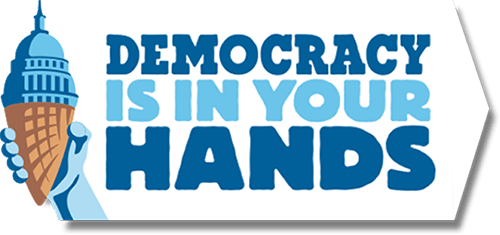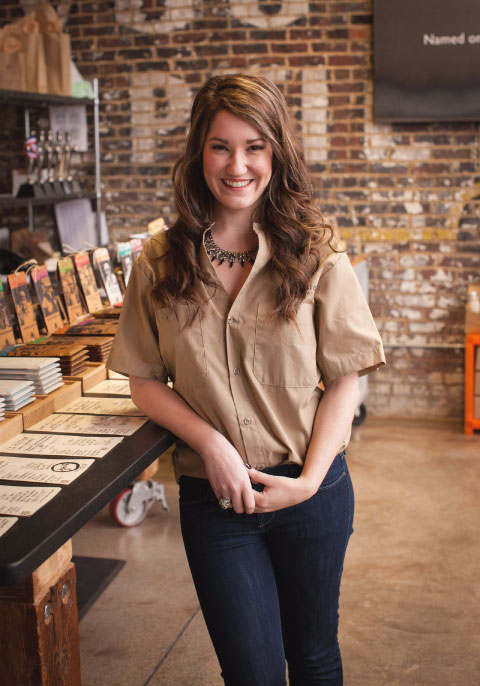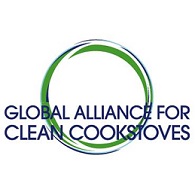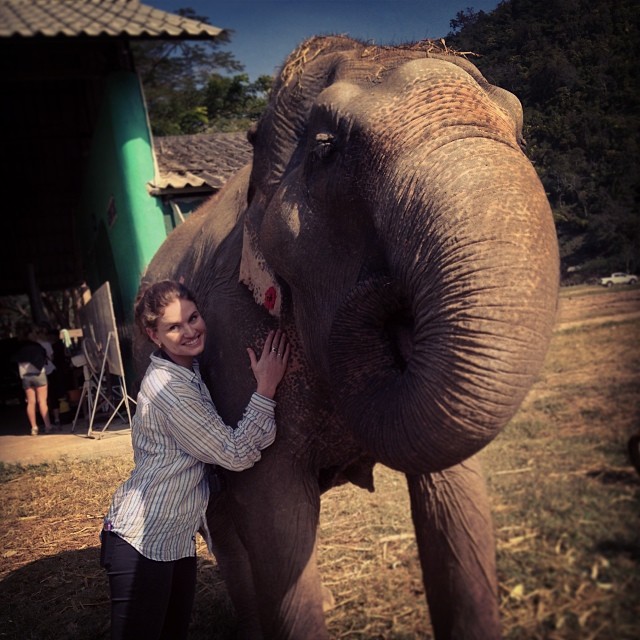The B Corps community is full of individuals and companies who truly believe in using business as a force for good. In connecting and working with this community, we’re continually reminded that aligning our work with our values is what leads to deep and sustainable impact. Lately, when we’ve come across a B Corp with a mission we think is unique or particularly inspiring, we’ve asked them to sit down with us so we can learn more about their models and impact.
One such B Corp is Terra Education, a company that offers international service-learning programs to students of all ages, with a focus on helping them acquire the skills and perspective necessary to become effective global citizens. We love that their programs emphasize long-term, sustainable impact on destination communities, as well as a thought-provoking and enriching experience for program participants. They offer experiences that are impact and community-focused, but that also align with their volunteers’ passions, such as animal and wildlife conservation trips to destinations like Thailand and Galapagos, and sports-oriented service trips to Costa Rica and the Dominican Republic.
We had the opportunity to connect with Terra Education’s Founder and Director Andrew Motiwalla to learn more about their work and impact – here’s what he had to say:
What sets Terra Education apart from other service-learning programs?
Terra Education offers two international travel programs: Global Leadership Adventures (service-learning trips for teens) and Discover Corps (volunteer vacations for adults). What sets us apart from other programs is our fanatical emphasis on identifying high-quality non-profit partners around the world. This allows us to connect our travelers to meaningful grassroots projects. Unlike some organizations that invent unneeded projects or simply make participants do any manual task as a quick way to add a volunteer component to their program, we have a team of people around the world dedicated to identifying sustainable projects and responsible NGOs that we can partner with.
We love your guiding principles of compassion, cultural sensitivity, innovation and integrity. What was your process for selecting these values?
Core values have a danger of becoming clichés. Our team was wary of inventing values that might seem like they were intended to make us sound good. So, we met as a staff and discussed what truly sets us apart from our other professions’ experiences. For almost everyone, these were values that we had not seen reflected to such a large extent at any of our other past jobs. Then, we tried to come up with scenarios where we might have to make the choice to compromise on these values – and the ones which we knew would never compromise are the ones we knew would hold true.
Speaking of putting your values to the test, can you explain how you use them in practice? For example, perhaps there's a time that stands out when you referenced your values to make a particular decision or overcome a particular obstacle?
Compassion is witnessed on a daily basis here. The fact that many staff members feel like Terra is a family is evidenced by the way we treat each other and our clients. For most of our clients, it is nerve-wracking to put your life in the hands of a company and fly to a developing country and hope for a good experience. We realize this. Instead of getting upset by anxious clients who ask tons of questions, we put ourselves in their shoes and consider the emotions they are feeling, and then answer the questions from that mental state. There are inherent risks in traveling abroad, and people have a right to ask tough questions and demand honest and thorough answers.
Cultural sensitivity is also critical in our work. All of our programs occur outside the United States, and therefore require a certain level of sensitivity to understand how things work in other countries. But it’s most important when doing any sort of project with a community. When designing our volunteer projects, the experience cannot be driven by us. Otherwise, it will be inauthentic, or worse, possibly damaging to the community. This requires a heightened sense of cultural sensitivity and cross-cultural competency.
As we understand it, program participants volunteer with community-based organizations. How do you select these partners?
When vetting a partner, we visit them to understand how they engage a community, and how they design their projects to be sustainable. Whether they're adult volunteers on a Discover Corps trip, or high school students with Global Leadership Adventures, our travelers are only in-country for a couple of weeks, and therefore it’s important that they be a link in a chain of volunteers that is working towards a larger vision.
Sometimes, partners are overly optimistic about how much foreign volunteers can actually contribute, and then we work with them to set expectations properly. Just because someone is an accountant from the United States doesn't mean that they can join a team to implement an accounting system for a NGO in another country in a week.
Do you regularly report on and/or review your impact? If so, has this had an effect on how your business has developed?
We definitely review our impact when it’s time to renew our certification, but we would like to do it more frequently. We are forming a new internal committee to look at more ways we can increase our impact in a more structured way. In the past, many of our efforts were ad hoc, but as we grow we would like to be more strategic about our impact. We hope to specifically look at areas where we can really boost our scores.
One of our favorite things about Terra Education is how they aim to have a positive impact both on the destination communities in which they work, as well as on the individuals who participate in their programs. These participants are called “gamechangers”, and you can learn more about their experiences here – we highly recommend that you check them out.
To follow along with Terra Education’s work or learn more about their service-learning programs, visit their website for adult programs: Discover Corps or their website for teen programs: Global Leadership Adventures.














































































